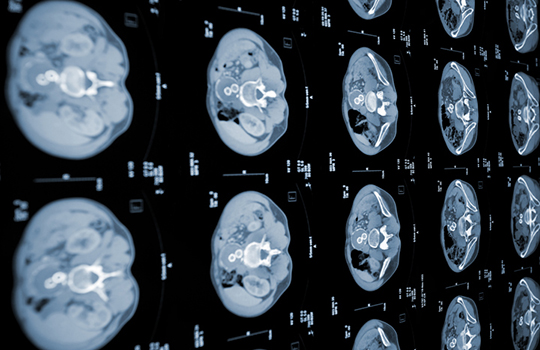Hindsight bias is a real and very powerful phenomenon, and not just in radiology
 There is a discipline in academic law concerned with what are known as “impossible crimes.” These are “crimes which are not crimes.” One of the classic examples involves an international traveller who is found to be in possession of a bag of white powder which he believes to be cocaine, but which on testing turns out to be a bland substitute, say chalk dust. Importing chalk dust is not a crime so on the face of it no crime has been committed. It’s an impossible crime.
There is a discipline in academic law concerned with what are known as “impossible crimes.” These are “crimes which are not crimes.” One of the classic examples involves an international traveller who is found to be in possession of a bag of white powder which he believes to be cocaine, but which on testing turns out to be a bland substitute, say chalk dust. Importing chalk dust is not a crime so on the face of it no crime has been committed. It’s an impossible crime.
I would like to adopt a similar formulation to describe events which sometimes happen in radiology and could be designated “impossible errors,” that is to say errors which are not errors. Consider Mrs X who undergoes a computed tomography (CT) examination because of bowel symptoms. The scan reveals a tumour in her colon. While reporting this examination, the radiologist notes that she had a CT scan performed a couple of years earlier for suspected kidney stones. The technique used on that occasion was focused on the identification of any stones and was far from ideal for looking at the colon. Nevertheless, the radiologist, knowing precisely where a tumour has subsequently been identified, is able with hindsight to identify something at the same location which looks like a polyp on the earlier study. No reader could have called this a polyp at the time, but its presence on the images is indisputable.
This is not a new concept. The Mayo Lung Project in the 1970s was a study of screening male smokers for lung cancer using four monthly chest x rays and pooled sputum samples. Retrospective analysis found that 90% of 50 peripheral cancers identified during the study were visible on at least one of the chest x rays obtained earlier in the study. Had the previous films been misinterpreted? Not necessarily. Some of these—perhaps a majority—would have been “impossible errors.” Only with hindsight, knowing the location of the subsequently diagnosed cancer, could the earlier image be interpreted as abnormal.
Hindsight bias is a real and very powerful phenomenon and not just in radiology. Once the outcome of any event is known, it assumes a degree of inevitability and it becomes very difficult to imagine an alternative. For us as medical imagers, once a particular reader has identified an abnormality, it becomes extraordinarily difficult to understand how another reader, on a different occasion, might have missed it. It is impossible to “un-see” something once it has been seen. Of course radiological abnormalities (and errors) come in a full spectrum from the truly “only visible in retrospect” to the glaringly obvious, but there are reasons why even the latter can be missed on occasions. Anybody unfamiliar with the “invisible gorilla” clip is strongly urged to view it and you will see what I mean.
Experience suggests that patients and the public are not particularly aware of the limitations of diagnostic tests, leading sometimes to a degree of shock and even anger when diagnostic errors come to light. There appears currently to be a wide gap between what radiologists know to be our error rate and what patients might believe it to be. It is surely in the interests of both doctors and patients to try to close that gap.
Is it time to consider whether all diagnostic tests should come with a “health warning?” These issues have been explored mainly in the context of screening tests designed to identify a single condition in which it is possible to make some estimation of the rates of false positives and false negatives. The situation is far more complex when we consider tests such as abdominal CT scanning which have the potential to identify (or miss) a very wide range of abnormalities ranging from the immediately life-threatening to the completely harmless. Exactly what information would most help a particular patient to appreciate the strengths and limitations, advantages and disadvantages, of undergoing the test?
In the case of impossible crimes, legal thinking has gradually shifted to place more emphasis on intent. Opinions will differ as to whether the patient’s interests are best served by including or excluding a particular finding—positive or negative—from a radiology report, but the intent is always the same. The job of the radiologist after all is the same as that of any other doctor—to improve the health of the patient, not simply to identify a list of things which might be wrong.
Giles Maskell is a radiologist in Truro. He is past president of the Royal College of Radiologists.
Competing interests: None declared.
